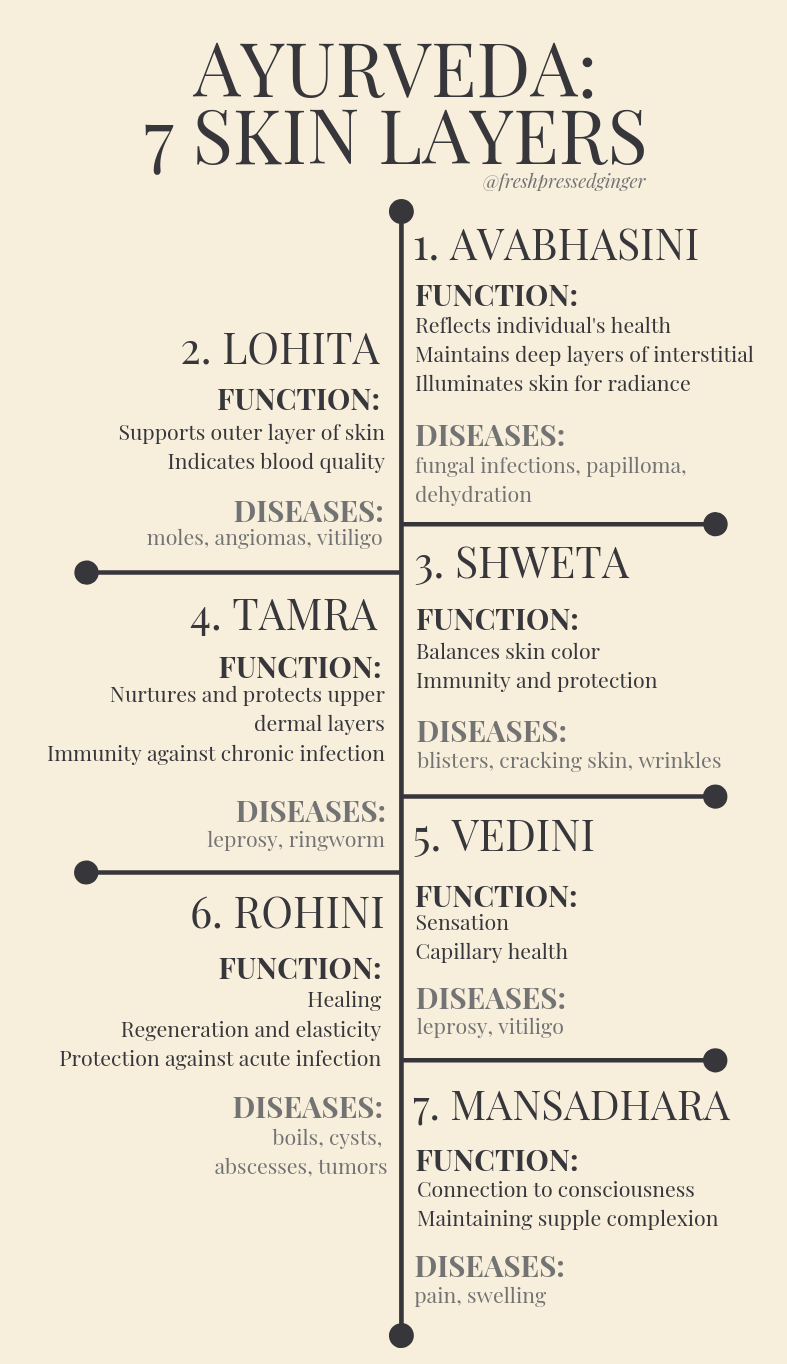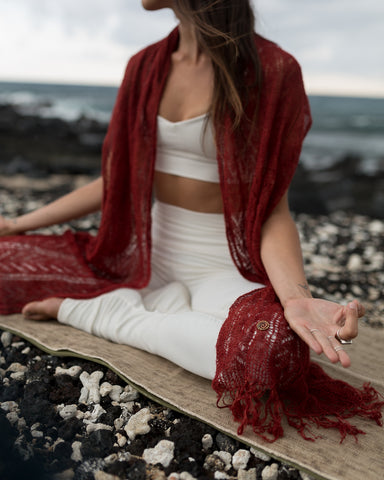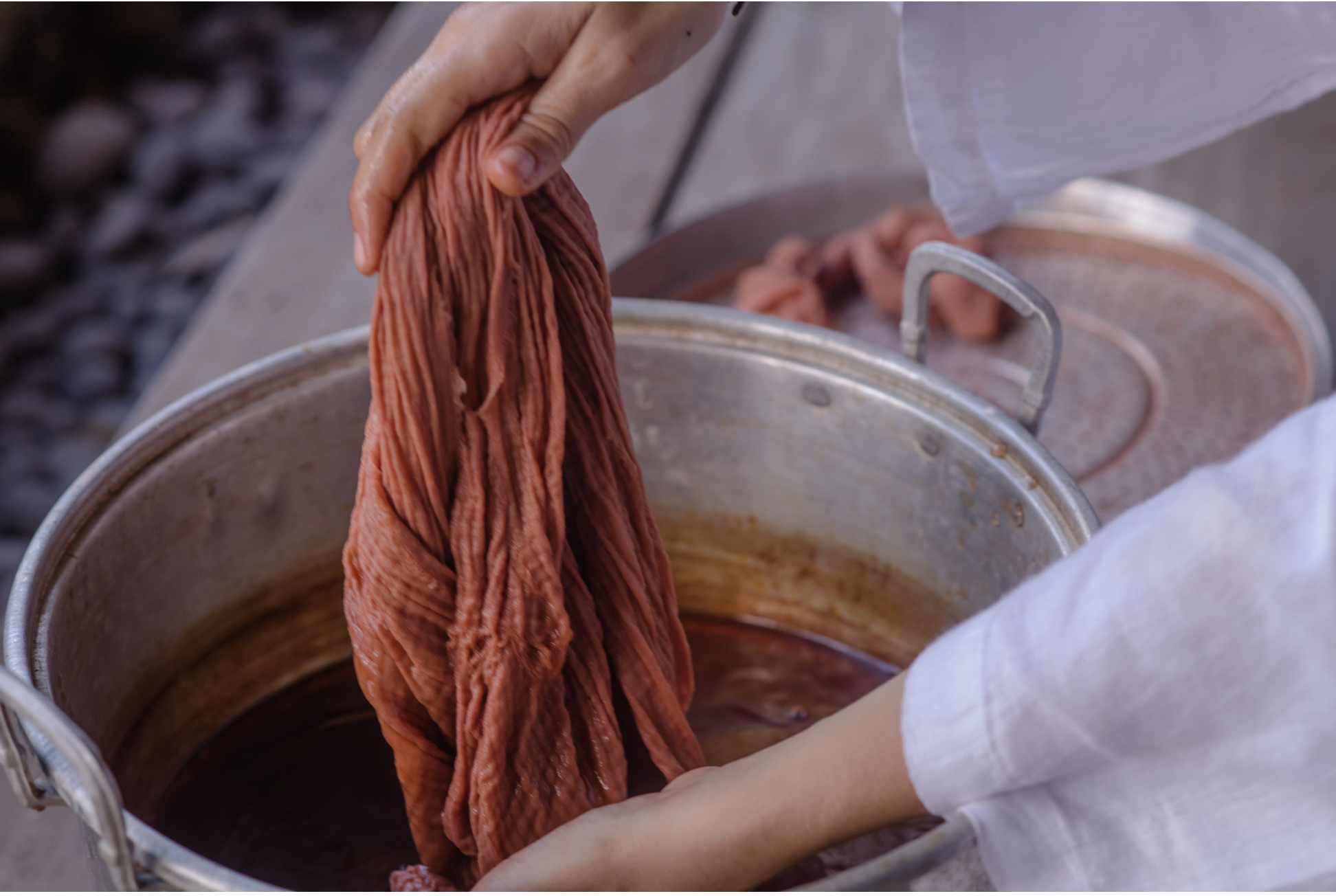We’ve discussed topical herbal skin treatments, internal herbal detoxification, and how our skin is a conduit for outside substances to enter the body (and for internal toxins to exit). We’ve explored in detail the problems that synthetic fibers have on both us and the environment, and the natural textiles that we can wear instead.
Here’s what we know:
- Topical herbal applications do wonders for the skin.
- Herbs in medicines, tinctures, foods, and teas help our body detoxify free radicals and chemicals that we encounter daily.
- The skin is the largest organ in the body, and as a result is the main channel of absorption of chemicals and free radicals – and is also an excellent source for expulsion when detoxification and self-care allow for it.
- Synthetic fabrics suffocate the skin and harm the environment in their production.Natural fibers free of chemical processing reduce fast fashion’s environmental impact and allow the body to breathe free of chemicals.
But, did you know natural fibers can be medicinal, too?
It extends far beyond simply lacking harmful chemicals; Ayurvastra clothing makes use of herbal dyes and treatments that act as healing agents to its wearer.
Ayurvastra
Ayurvestra, a branch of traditional Ayurvedic Indian medicine, is a method of using textiles to restore and promote balance and health through the textiles we come in contact with, such as bedding and clothing.
It uses herb-infused and herb-dyed organic fabrics that acts as healing agents for various ailments such as allergies, hypertension, respiratory conditions, joint paint, and skin problems.
Ayur: “health” or “life”
Vastra: “cloth”
How does Ayurvastra work?
As the skin comes into contact with the herb-infused fabric, the body benefits from the herbs’ properties, much like it would when the herb is applied topically as a paste, cream, or tincture.
Traditionally, Ayurvastra’s healing benefits are maximized when the body is at rest, because it’s the time when the body naturally heals itself, but the benefits still take effect regardless of when or how you wear the fibers.
Ayurvedic medicine describes the skin as having 7 layers, each with their own functions and corresponding ailments:
Different herbs are able to address and mitigate the conditions that people may face within the 7 layers of their skin.
To make it even more interesting (and perhaps confusing), the issues experienced within the layers relates to the 3 Ayurvedic doshas: vata, pitta, and kapha. For example, vata people experience dehydration more often than kapha people, whose skin errs on the side of oily. Pitta people are more prone to moles, freckles, and sun damage, and of course, there are always combinations of doshas. Curious what your dominant dosha is? Find out here.
But it’s not just skin deep: the dermal layers connect to the rest of the body through nerves, which communicate with the central nervous system (the brain) and the immunological functions of the body. In the same way that BPA and chemicals in synthetic fabrics leach into the skin and affect the entire body (such as liver, hormones, pancreas, and more), the healing properties of herbs and natural fibers seep into the skin – but with beneficial effects.

Does ayurvastra work?
To anyone unfamiliar with the medicinal benefits of natural clothing (or the negative impacts of synthetic clothing), the concept of your clothes providing healing benefits can seem a little out there, but it’s been a method of Ayurvedic medicine for over 5,000 years and has been researched and proven in modern lab settings:
The Government Ayurveda College conducted a month-long trial using bedding, rugs and towels made from Ayurvastra. The result: marked improvement in patients suffering from arthritis and skin ailments.
The Ministry of Health under the Government of Keral conducted a 6-month clinical trial involving patients suffering from rheumatism, allergy, hypertension, diabetes, psoriasis and other skin ailments. For the study, all clothes, bed linens and mattresses of the patients were dyed in Ayurvastra herbs and the walls, floors, and ceilings in the patients’ room’ were lined with Ayurvastra coir mats.
In both studies, the improvements in the health of patients suffering from rheumatism and arthritis are especially interesting because rheumatism and arthritis are not skin disorders – they are immunological and inflammatory. These studies indicate that Ayurvastra’s benefits extend beyond visible skin ailments.
How is Ayurvastra made?
All ingredients that go into Ayurvastra are devoid of synthetic toxic chemicals, are natural, and therefore are biodegradable, protecting the environment from pollution and damage from start (production of material) to finish (end of its wearable life cycle).
Organic fibers used in Ayurveda are commonly cotton, silk, wool, jute, coir, hemp, nettle, and more.
The woven fabrics must be bleached naturally to ensure that the herbs added to the textile are most efficiently absorbed – this is most often done using animal waste product (dung and urine). The cloth is then sanitized thoroughly, and processed with natural mordant (often barks and/or fruit extracts) which prepares the textile to take the dye.
The dye in Ayurvastra is referred to as Kashaya, which roughly translates to “medical concoction,” because each mixture of herbs used to impart color upon the fabric is actually concocted for its healing benefits.
After the fabric has dried, it is left for 15 days to be “seasoned,” which is when the fabric dries completely and the medicinal qualities of the medical herbal colorants can settle completely into the cloth.
After its first round of seasoning, the cloth is washed and dried again, then seasoned for 15 more days. After which, if necessary, it’s finished by using materials such as aloe vera or natural oils.
All in all, the process from start to finish takes over a month!
Where’s the waste? The beauty in Ayurvestra’s production is its lack of it! After dyeing, residue is recycled: solid and liquid waste is separated to tend to the fields, as none of it is toxic.
What dyes are used, and what are their benefits?
| Medicinal Product | Medicinal Properties |
| Aloe vera/Ghritkumari(Aloe barbadensis) | Highly effective in cure of infections, wounds and burns, HIV/ AIDS. |
| Brajil wood / Pathan Bakkam(Caesalpinia braliensis) | Acts as a blood purifier, thus improves complexion and alsocures various skin diseases. |
| Castor/Rendi (Ricinus communis) | The oil contains strong insect repellent properties, maintainstemperature of the skin, thus facilitating body transpiration. |
| Cateccu / kattha(Unsaria gambir) | Controlling the occurrence of pimples. |
| Harad(Terminalia chebula) | Acts as an antiseptic and due to its excellent blood purifyingproperties, curb dermatatitis. |
| Chireta/ Chirayata(Swertia chiraata) | Cures various skin diseases. |
| Cumin / Jeera (Cuminum cyminum) | Oil from its seeds is effective against eczema. |
| Golden Champa / Champa (Michelia champaca) | Excellent in getting relief from burning sensations from skindiseases, allergices and sores. It imparts yellow colour to the fabric when its flowers release the same on boiling. |
| Guar Gum / Guar(Cjamopsis tetragonaloba) | It regulates body transpiration, curbs body infections. |
| Henna / Mehndi (Lawsonia inermis: | Henna is age-old blood purifier, with anti-irritant and deodorant properties. It is also a good antiseptic, hence is used for skin irritations, rashes and allergies caused by the extremeIndian heat, simultaneously cooling the body. |
| Indian Basil / Tulsi (Ocimum sanctum) | Controls viral and bacterial infections. Its essential oil is an antiseptic and insect repellent property, while paste of its rootgives relief from bites and stings. |
| Indian Gentian / Kalmegh(Andrographis paniculata) | A good blood purifier and anti-viral substance |
| Indian Gooseberry / Amla(Emblica officinalis) | It is a rich source of Vitamin C. Due to its antioxidantproperties, it stimulates healing due to fungal, bacterial, and |
| viral attacks and stimulates the bodies‟ immune system. | |
| Indian Madder/Madder(Rubia cordifolia) | It curbs blood impurities and gives relief from various skindiseases. |
| Indian Mulberry, Noni / Al (Morinda dtrifolia) | The dye obtained from root bark imparts a yellow, reddish purple and brown hue in making batik prints on cotton, wooland silk. It has good blood purifier properties and stimulates wound healing. |
| Indian Podophullum / Bankakadi,Nirbash (Podophyllum emodi, Podophyllum hexandrum) | Its rhizome is used in curing skin diseases, cuts and wounds. |
| Indigo/Neel (Indigofera tinctoria) | It has antiseptic, anti allergic properties, so is effective in curing skin diseases. |
| Lime/Nimbu (Citrus medica) | It is a powerful disinfectant and an astringent against sebaceous secretions. A mixture of lime juice and rose water is a popular body coolant and skin tonic. |
| Long pepper / Pippali(Piper longum) | Its fruit is used to cure leprosy. |
| Mahua/Mahuva (Madhuca longifolia, Madhuca indica) | The bark, leaves, flowers and seeds are used for varied medicinal purpose. Decoction of the bark is applied in curing itch; the seed oil is efficacious in treating skin ailments. It is administered internally in diabetes. Leaves being astringent, their ash mixed with butter is applied on burns and scalds. |
| Marigold / Genda, Zergul(Calendula officinalis) | Flowers promote skin health; used to cure skin disease. |
| Margosa (Azadirachta indica) | It has good antiseptic and disinfectant properties; its stem bark, leaves and root bark act as blood purifier and is useful in many skin ailments like eczema, psoriasis, rashes, leprosy.Also soothes scabs with clearing away scars. |
| Monkey Face Tree / Kamala, Kamela (Mallotus philippinensis) | The red glandular and hairy substance separated from the fruits is used as anti Uergenic, and astringent to cure scabies, cutaneous infections and to destroy tapeworms andringworms. |
| Onion I pyaaj (Aluum cepa) | Its helps to give relief from skin disease. |
| Peanut oil / Mun^hali(Arachis hypogea) | It promotes body freshness. |
| Pomegranate / Anar (Púnica granatum) | It is effective in providing relief from tapeworms by paralyzing them, thus they are easily expelled from the body. The plant is also rich in tannin, which makes it an effective astringent. The bark has prominent antibacterial, antiviral andastringent properties. |
| Rose / Gulab(Rosa damascena, Rosa centifolia) | Rose water and oil are good astringent to clean and tone upthe skin. |
| Safflower / Kusum(Carthamus tinctorius) | Finds application in skin care; Florets and seeds release redand yellow dyes for application on cotton and wool fabrics. |
| Saffron / Kesar (Crocus sativas) | Cures pimples, and gives relief from rashes. |
| Sandalwood / Chandan (Santalum album) | It gives cooling sensation to skin, and maintains skin health. It has antiseptic, anti-inflammatory and Styptic properties,capable of stalling local bleeding in cuts wounds; helps in curing skin itching, prickly heat, burns and heat rashes. |
| The Indian laburnum / Amaltas (Cassia fistula) | Its leaves, stem bark, and fruit pulp have antibacterial properties. The root possesses antifungal activity and the essential oils extracted from various parts of the tree promote antiviral properties. The bark and leaves are ground into apaste to treat chronic skin infections. |
| Tinospora / Gelqy(Tinospora cordifolia) | Its root and bark are used to cure various skin diseases. |
| Touch-me-not / Chhui-Mui, Lajwanti(Mimosa púdica) | The roots, leaves and flower heads have medicinal properties,rendering it suitable in treatment of leprosy, inflammations, |
(source: MinocheherhomjiFPet al.)
Not convinced? Try it yourself!

Wrap yourself in purity and protection with a beautiful hand-knit shawl from the Himalayas. Each piece is one of a kind and comes in a handful of beautiful designs created by the women of Bala. The nettle yarn is 100% wildcrafted and processed with no chemicals in harmony with nature.
Botanically dyed with Madder Root (Rubia tinctorum), this ruby red hue serves as a doctrine of signatures demonstrating the root’s use as a blood remedy. In chromotherapy, red is used to bring warmth, energy and stimulation to the system, thus being supportive with low energy, fatigue, and colds. Red also energizes heart and blood circulation, builds up the blood and heightens a low blood pressure. It enlivens all organs and the senses hearing, smell, taste, vision and touch. Increases sexual desire and activity.
